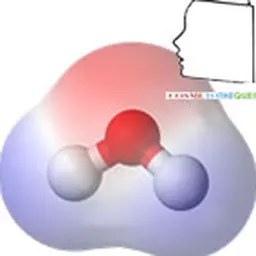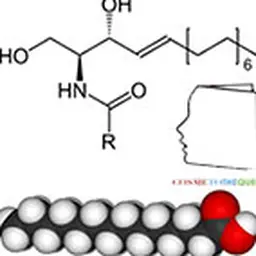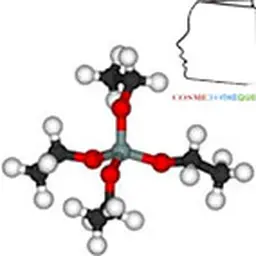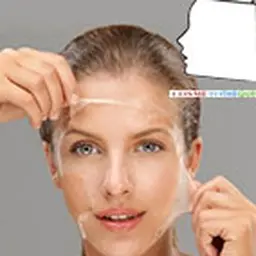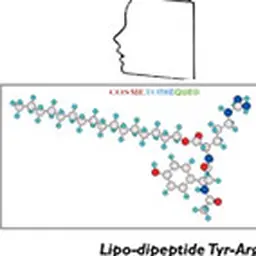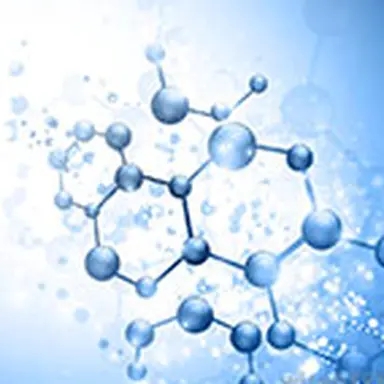
This could be the reaction of a Marketing Manager of an"anti-ageing" range when the formulation laboratory presents the latest proposal of innovative active ingredients. Indeed, peptides - as described in the first part of this article - have been introduced, used, commented on, praised and sometimes criticized for a long time. Why are these peptides still of cosmetic interest today?
We briefly mentioned the Matrikines concept at the end of the first part of this article without dwelling on the details of this notion. It nevertheless explains the fine mechanism of peptide activity and consequently the advantages and benefits of their continued and increased use in cosmetic skin care products.
It all starts with wound healing research. A wound (e.g. a cut) needs repair and the skin is equipped to make it. Here is not the place to describe all its complexity, but in a very schematic way we can say this: the damaged macromolecules of the damaged tissue must be evacuated to make room for the creation of new tissue; proteolytic enzymes (for proteins such as collagen, elastin, fibronectin, laminin…) and glycolytic enzymes (for polysaccharides such as GAG, HA and other proteoglycans) work to fragment these macromolecules: the fragments are more soluble and can be eliminated by lymph and/or blood.
But Nature is thrifty: it turns out that some of these protein fragments (so small"peptides") have a messenger activity (Although delicate to handle in our trade, the word messenger in ancient Greek is called"hormone"…), a function that triggers the neosynthesis of tissue. The fact of having released by this proteolytic action some of these specific peptide fragments is a signal given to the fibroblast cells of the dermis to start the regeneration of the extracellular matrix. Nice communication circle between tissue and cellular plants. This is the concept of Matrikines already mentioned (The same mechanism works, apparently also for polysaccharide fragments; we speak thus of Glycokines; but this aspect is even less studied to date).
Let us now turn to peptides in cosmetics. Publication of an article on the results of research conducted at the Tennessee Veterans Hospital - K Katayama, J Armendariz-Borunda, R Raghow et al. A pentapeptide from type I procollagen promotes extracellular matrix production. J Biol Chem 268 (14): 9941-9944, (1993) - revives towards the year 1998 the interest of healing peptides. Katayama (who in a veterans hospital is obviously interested in scarring) shows that a pentapeptide of sequence KTTKS (Lys-Thr-Thr-Lys-Ser), fragment of pro-collagen I, is the smallest fragment still possessing a significant stimulating activity of neosynthesis of this same collagen in the fibroblasts of the lungs…
The company Sederma, having meanwhile acquired a certain experience with peptides for cosmetic use, takes hold of this idea: faithful to previous observations (cf. Part 1 ), researchers attach a palmitoyl chain to this pentapeptide and decide to go further than usual to combat skin aging: wrinkles ("scars of the passage of time", according to Odes d'Horace) appear only after 30 years or more, they can only be repaired permanently by giving the skin healing time: a clinical test over 6 months (a"First" in the trade of active ingredients) against placebo out of 35 people is undertaken. The results of the anti-wrinkle efficacy exceed all expectations, both from a statistical significance point of view and from a visual point of view (macrophotography).
Other studies ( in vitro to support the mechanisms of action at the genetic and protein level, in vivo on several panels with biopsies, in comparison with reference substances) confirm the first results. A presentation of this work at the World Dermatological Congress in Paris in 2000 launched the range of Matrikines peptides, of which the MATRIXYL® family is the best known.
Obviously, this KTTKS fragment is not the only Matrikine of cosmetic interest, the idea is making its way. Lipotec (Spain), Cognis (Nancy), Pentapharm (Switzerland) and others are interested in the large number of other biologically active protein fragments. The aim here is not to draw up a catalogue.
Let us nevertheless mention the peptide known under the name ARGIRELINE® developed by the Lipotec company on a similar idea and yet very original. Botox® injections having been successful with a large number of consumers, it was interesting to understand the exact mechanism and to try to reproduce similar efficacy topically, without injection. Details of this work have been published in the IJCS (C. Blanes-Mira et al. A synthetic hexapeptide (Argireline) with antiwrinkle activity. Int. J. Cosmet. Sci. 2002, 24, 303-310); let us simply say here that a synthetic peptide which interferes with the formation of the SNARE complex (which ensures communication between neurons and muscles) makes it possible to block (micro) muscle contractions; it imitates the action of BOTOX®, although less rapidly, obviously. In any case, classic anti-wrinkle clinical studies have confirmed the effectiveness of the concept.
For the record, in the years 2000-2005, the two flagship peptides MATRIXYL® and ARGIRELINE® were in a fierce race for Google® citations: when one day ARGIRELINE® took the lead with > 800,000"hits", the next day, MATRIXYL® was ahead with > 850,000 pages and inversely . Very often, the two blockbusters were formulated together in the same anti-wrinkle creams but no (published) study has shown a synergy that could exist.
As the Americans say:"the rest is history". Since this period of dramatic growth in the cosmetic use of synthetic peptide fragments of natural proteins, a large number of peptides with various targeted activities has emerged. Today, we find firming peptides (strengthening elastic tissue), slimming peptides (stimulating lipolysis through various mechanisms), calming peptides (acting on sensitive neurons of the epidermis), anti-inflammatory/anti-irritant peptides (fragments of IgG immunoglobulins that reduce interleukin secretion), hair loss peptides (strengthening the anchoring of the dander in the hair follicle), tanning or bleaching peptides (modulating melanogenesis), peptides protecting stem cells in their environment…
And this is the reason for the long-lasting cosmetic use of peptides: with only 5 chained amino acids (pentapeptide), for example, it is possible to design 3.2 million different sequences, many of which will undoubtedly present well-targeted, interesting and beneficial activities for the application in our products, from shampoo treatment to eye contour serum, from lipstick to mascara, from bust firming to stretch marks treatments…
Certainly, other substances may sometimes possess similar, attractive and/or exotic cosmetic activities. The advantage of peptides, already mentioned in the first part, lies nevertheless in their proximity to human physiology: amino acids, peptides and proteins are natural constituents of our body, unlike flavonoids, alkaloids and other xanthines…
Our Marketing Manager at the beginning of this article should therefore rejoice rather than complain: E Another peptide! And what's he up to?
Karl Lintner KAL'IDEES S.A.S.
| After 10 years of research on Biological Peptides at the Saclay Center for Nuclear Studies, he joined HENKEL KGaA in Düsseldorf (Germany). In 1990, he became Technical Director at SEDERMA (Active Cosmetic Ingredients Development), then General Manager. Among the many achievements of this company, the introduction of the Peptides concept to cosmetic applications ("MATRIXYL®") is particularly noteworthy. Winner of several Innovation Awards for SEDERMA, he is the recipient of the In-Cosmetics Life Time Achievement Award 2013. Associate professor at the UVSQ, he is an internationally recognized lecturer in the world of cosmetics. |




